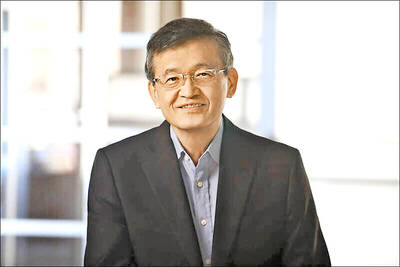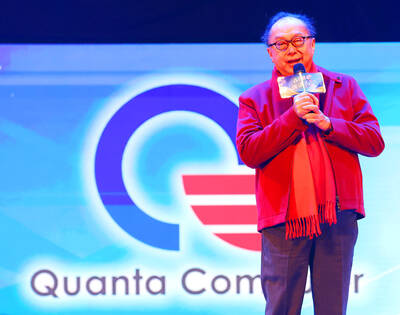Hong Kong’s best-performing stocks this year are tumbling even faster than they rallied.
Goldin Financial Holdings Ltd (高銀金融) and Goldin Properties Holdings Ltd (高銀地產), controlled by billionaire Pan Sutong (潘蘇通), plunged more than 60 percent in Hong Kong trading yesterday.
There was no immediate explanation for the drop.
Before the rout, the two stocks had surged more than 300 percent this year for the biggest gains on the Hang Seng Composite Index.
The tumble follows the mysterious 47 percent plunge in 24 minutes by Hanergy Thin Film Power Group Ltd (漢能薄膜發電) on Wednesday, which erased US$19 billion in market value before trading was suspended.
“It’s a contagion effect,” said Nick Cheng, head derivatives trader at Liquid Capital Markets Ltd in Hong Kong.
Investors “are now rushing to take profit and everyone’s suddenly running for the exit,” he said. “[The volatility] will damage investor confidence with such a reputable stock exchange.”
Hong Kong Exchanges and Clearing Ltd and Hong Kong’s Securities and Futures Commission declined to comment on any regulatory action or individual company’s stock moves.
Goldin Financial sank as much as 62 percent, the most since the stock first traded in 1992, before paring its decline to 43 percent at the close. The drop erased US$12 billion of market value.
Goldin Properties slid 41 percent to wipe out US$4.6 billion after declining 61 percent earlier. Trading in Hanergy shares remain suspended. The Hang Seng Composite Index retreated 0.7 percent.
Goldin Group’s businesses and operations are functioning normally and its financial position is stable, according to an e-mailed statement yesterday from iPR Ogilvy & Mather, which handles external relations for Goldin Properties and Goldin Financial.
The boards of both companies are unaware of any reason for the movement in the share prices, it said.
Hanergy’s parent Hanergy Holding Group Ltd (漢能控股集團) said operations are normal and there is no overdue debt.
The parent has not used the unit’s shares for derivatives trading, Hanergy Group said in a statement posted on the company’s Web site yesterday.
The volatility of Chinese companies in Hong Kong underscores the risks for global investors in the nation’s world-beating rally. Both Hanergy and Goldin Financial were added to FTSE’s Asia Ex-Japan large-cap index in March, while MSCI Inc plans to include Goldin Properties on the MSCI China Index at the end of the month.
Before Wednesday’s tumble, Hanergy had jumped 162 percent this year for the biggest advance among more than 2,400 members on the MSCI All-Country World Index.
“Valuations are ridiculously high,” Castor Pang (彭偉新), the head of research at Core Pacific-Yamaichi in Hong Kong, said by telephone. “The stocks surged too much and no one knows why.”
Goldin Financial had revenues of HK$236 million (US$30 million) for the six months ended December last year.
The company has a wine trading business, which includes vineyards in California and France, and also does factoring — buying the accounts receivables of other companies at a discount.
More than 99 percent of its net income for the period came from an increase in fair value of a 27-story office tower being constructed in Hong Kong’s Kowloon Bay district, its sole property holding.
Goldin Properties is developing a US$10 billion, 89 hectare parcel of land in Tianjin in northeastern China, including a 117-story office tower, luxury villas and a polo field.
More than 60 percent of Hanergy’s sales come from the Beijing-based parent, a solar panel and hydroelectric company.
Hong Kong’s SFC has been probing market manipulation in Hanergy’s shares for several weeks, Reuters reported on Wednesday, citing an unidentified person.

Intel Corp chief executive officer Lip-Bu Tan (陳立武) is expected to meet with Taiwanese suppliers next month in conjunction with the opening of the Computex Taipei trade show, supply chain sources said on Monday. The visit, the first for Tan to Taiwan since assuming his new post last month, would be aimed at enhancing Intel’s ties with suppliers in Taiwan as he attempts to help turn around the struggling US chipmaker, the sources said. Tan is to hold a banquet to celebrate Intel’s 40-year presence in Taiwan before Computex opens on May 20 and invite dozens of Taiwanese suppliers to exchange views

Application-specific integrated circuit designer Faraday Technology Corp (智原) yesterday said that although revenue this quarter would decline 30 percent from last quarter, it retained its full-year forecast of revenue growth of 100 percent. The company attributed the quarterly drop to a slowdown in customers’ production of chips using Faraday’s advanced packaging technology. The company is still confident about its revenue growth this year, given its strong “design-win” — or the projects it won to help customers design their chips, Faraday president Steve Wang (王國雍) told an online earnings conference. “The design-win this year is better than we expected. We believe we will win

Quanta Computer Inc (廣達) chairman Barry Lam (林百里) is expected to share his views about the artificial intelligence (AI) industry’s prospects during his speech at the company’s 37th anniversary ceremony, as AI servers have become a new growth engine for the equipment manufacturing service provider. Lam’s speech is much anticipated, as Quanta has risen as one of the world’s major AI server suppliers. The company reported a 30 percent year-on-year growth in consolidated revenue to NT$1.41 trillion (US$43.35 billion) last year, thanks to fast-growing demand for servers, especially those with AI capabilities. The company told investors in November last year that

Power supply and electronic components maker Delta Electronics Inc (台達電) yesterday said it plans to ship its new 1 megawatt charging systems for electric trucks and buses in the first half of next year at the earliest. The new charging piles, which deliver up to 1 megawatt of charging power, are designed for heavy-duty electric vehicles, and support a maximum current of 1,500 amperes and output of 1,250 volts, Delta said in a news release. “If everything goes smoothly, we could begin shipping those new charging systems as early as in the first half of next year,” a company official said. The new